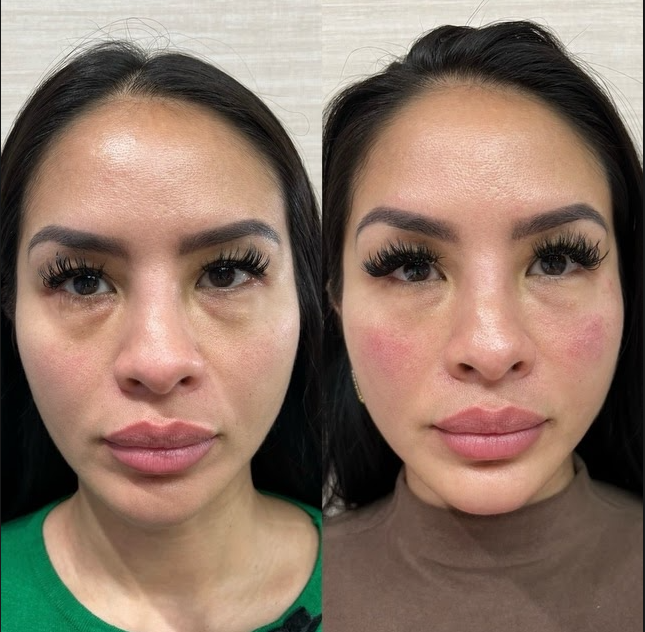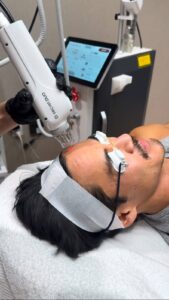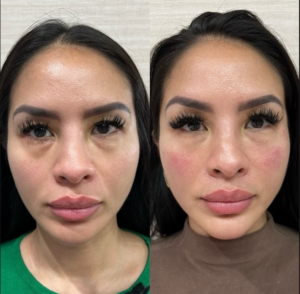Dermal fillers have emerged as a transformative approach for individuals seeking subtle enhancements to their facial features. Whether you’re looking to restore volume, smooth out wrinkles, or brighten the under-eye area, these minimally invasive treatments can deliver noticeable, yet natural-looking results.
Many people appreciate the convenience of a simple injection rather than pursuing surgical interventions. However, with a wide range of dermal filler types available and varying techniques, it’s crucial to understand the potential benefits and risks before diving in. In this article, we’ll explore what dermal fillers are, how they work, and why they’re increasingly popular in aesthetic medicine.
The Science Behind Dermal Fillers
Dermal fillers are gel-based injectables placed beneath the skin to boost volume, diminish aging signs, and shape facial contours. Commonly formulated with hyaluronic acid, calcium hydroxylapatite, or poly-L-lactic acid, each offers distinct advantages. Hyaluronic acid draws in moisture, promoting plump, hydrated tissue, while calcium- or collagen-stimulating fillers spur tissue regeneration. Over time, the body metabolizes these substances, minimizing extended complications. Modern developments yield reliable, uniform results, securing dermal fillers as a core non-surgical method for effective, successful facial rejuvenation today.
Versatile Benefits
One of the most appealing aspects of dermal fillers is their versatility, addressing concerns from fine lines to lost volume in the cheeks. A prominent example is dermal fillers under the eyes, employed to reduce hollows or dark circles for a fresher, more rested appearance. Aside from that, fillers can smooth nasolabial folds, define the jawline, and add subtle lift to the lips. Results often appear immediately, with minimal downtime and swelling that subsides within days. Because treatments are highly customizable, practitioners can tailor the amount and placement of filler to achieve harmonious enhancements unique to each individual’s facial structure.
What to Expect During Treatment
Before receiving dermal fillers, a consultation allows practitioners to assess facial anatomy and discuss desired outcomes. During the appointment, the skin is cleansed, and a topical anesthetic may be applied to increase comfort. The injection process itself is brief, often lasting only a few minutes per area. Patients may feel mild pressure or pinching sensations, but discomfort is usually minimal. After injections, clinicians may gently massage the area to ensure even distribution. Some individuals experience transient swelling or bruising, which typically fades within a week. Following aftercare instructions diligently helps promote smooth results and minimize any post-procedure complications and discomfort.
Safety and Potential Risks
Although dermal fillers are widely regarded as safe, possible side effects include redness, swelling, or minor bruising. Most reactions are mild, resolving quickly, but selecting a skilled medical provider mitigates risk. In rare instances, issues like infection or vascular occlusion highlight the necessity of proper technique and sterile conditions. Allergic responses are rare, though patients should disclose any medical history or sensitivities. Keeping realistic expectations and adhering to pre- and post-procedure guidelines helps avert complications. Ultimately, consulting a fully qualified practitioner ensures suitable treatment and safe, efficacious outcomes overall.
Choosing a Skilled Injector
Selecting a skilled injector is essential for achieving optimal results and minimizing adverse events. Look for licensed medical professionals, such as board-certified dermatologists or plastic surgeons, who have extensive filler experience. Ask about the brand of filler and why it’s recommended for specific concerns.
Reviewing before-and-after photos helps gauge an injector’s technique, ensuring their approach aligns with your aesthetic goals. Transparency around potential side effects and realistic outcomes is also crucial. A thorough consultation includes medical history, facial assessment, and discussion of any previous procedures. Investing time in finding the right expert lays the foundation for safe, satisfying results overall.
Selecting the Right Product
Dermal fillers come in various thicknesses, viscosities, and formulations designed for different facial areas. For instance, thinner hyaluronic acid fillers are preferred around delicate zones like the lips or under-eyes, while denser fillers work better in the cheeks or jawline. Each brand offers specific benefits, such as smoother spread, increased longevity, or improved collagen stimulation.
A knowledgeable injector assesses your anatomy and aesthetic goals to recommend the most suitable product. Combining multiple filler types can address complex concerns without looking overdone. This personalized approach ensures that each treated area maintains a balanced, natural appearance while still achieving noticeable enhancements successfully.
Longevity of Results
Filler longevity depends on factors like product type, treatment area, and individual metabolism. Hyaluronic acid fillers generally last six to twelve months, though certain brands offer extended duration. Meanwhile, collagen-stimulating fillers may deliver results for up to two years. Over time, the body gradually breaks down and absorbs these materials, so maintenance appointments are recommended to preserve desired effects. However, some patients enjoy longer intervals between treatments if they appreciate a more subtle fade. Lifestyle habits, skin quality, and sun exposure also play a role in filler longevity. Ultimately, consistent follow-ups can help maintain a harmonious, youthful appearance over time.
Cost and Financing
Pricing for dermal filler treatments varies according to the product used, the number of syringes required, and geographic location. Premium brands or specialized fillers sometimes come at a higher rate, while combination treatments can increase overall costs. However, many clinics provide financing or payment plans to accommodate diverse budgets. When researching options, focus on injector qualifications and clinical standards rather than seeking bargain prices. Inexperienced providers may compromise on safety or quality, jeopardizing results. By investing in a reputable practice, you improve the likelihood of a smooth experience and satisfying outcome that justifies the treatment’s initial financial commitment and reassurance.
Combining with Other Procedures
Dermal fillers work alongside other cosmetic procedures, not replacing them. For deeper wrinkles, neurotoxin injections like Botox relax muscles and soften expression lines, while fillers restore lost volume. Laser treatments or chemical peels enhance skin texture, maximizing filler benefits. Surgery may be indicated for advanced sagging that fillers alone cannot resolve. Ultimately, individual goals, downtime limits, and budget dictate the best combination. A thorough consultation with a qualified expert confirms if a filler-only or multimodal strategy achieves optimal, youthful-looking outcomes.
Lifestyle Tips for Prolonged Results
Maintaining healthy skin habits can help extend the lifespan of your dermal filler investments. Adequate hydration supports skin elasticity, while a balanced diet provides essential nutrients for cellular repair. Applying broad-spectrum sunscreen daily shields treated areas from premature degradation caused by UV exposure. Avoiding excessive facial movements and refraining from smoking also benefit filler longevity. Skincare products containing antioxidants or gentle exfoliants may improve overall skin texture, complementing filler effects. Scheduling periodic touch-ups ensures results remain fresh and symmetrical, preventing sudden changes once the filler naturally breaks down. A proactive, mindful approach keeps your enhanced features looking their very best.
Book a Consultation Today
Dermal fillers offer a versatile, minimally invasive method for addressing various cosmetic concerns. From softening wrinkles to adding volume in targeted regions, these treatments can rejuvenate the face without resorting to surgery. For many, the journey starts with deciding whether dermal fillers under the eyes, in the cheeks, or along the jawline can provide the most benefit.
Educating yourself on product choices, seeking a qualified injector, and adhering to aftercare protocols sets the stage for a positive experience. As technology advances, fillers continue evolving, delivering more natural outcomes than ever. With proper care, you’ll enjoy refreshed, confident results that endure.




